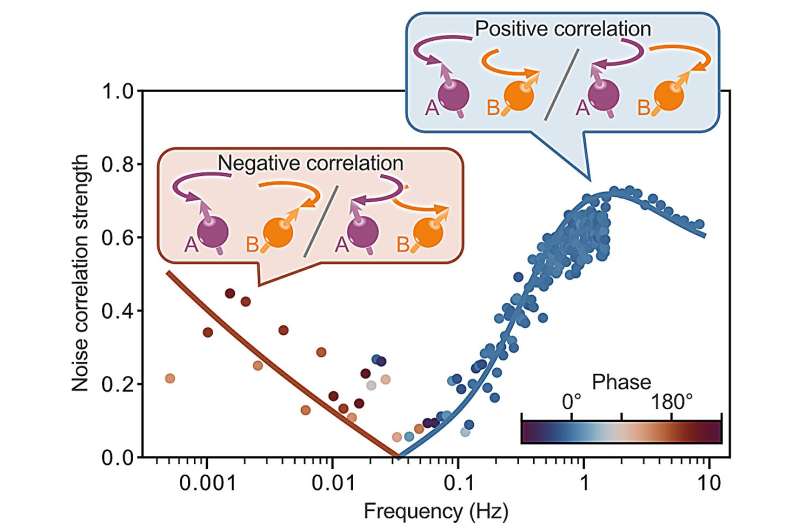To build highly performing quantum computers, researchers should be able to reliably derive information about the noise inside them, while also identifying effective strategies to suppress this noise. In recent years, significant progress has been made in this direction, enabling operation errors below 1% in various quantum computing platforms.
A research team at Tokyo Institute of Technology and RIKEN recently set out to reliably quantify the correlations between the noise produced by pairs of semiconductor-based qubits, which are very appealing for the development of scalable quantum processors. Their paper, published in Nature Physics, unveiled strong interqubit noise correlations between a pair of neighboring silicon spin qubits.
“A useful quantum computer would practically require millions of densely packed, well-controlled qubits with errors not only small but also sufficiently uncorrelated,” Jun Yoneda, one of the researchers who carried out the study, told Phys.org. “We set out to address the potentially serious issue of error correlation in silicon qubits, as they have become a compelling platform for large quantum computations otherwise.”
Fabricating highly performing quantum processors based on many closely positioned silicon qubits has so far proved challenging. These systems would exhibit noise that is correlated between different qubits. This reduces the devices’ fault tolerance, increasing their error rate and thus impairing their performance.
As part of their recent study, Yoneda and his colleagues set out to explore the extent of these interqubit noise correlations, in the hope of informing the future development of semiconductor-based quantum computing systems. To do this, they analyzed and tried to quantify the correlation between the noise seen by two silicon-based qubits that were placed 100 nm away from each other.

“Errors in silicon spin qubits are dominated by fluctuations of the qubit energy, that is, the energy difference between the spin-up and -down states,” Yoneda explained. “We measured the simultaneous time evolution of qubit energies and assessed the ‘degree of similarity’ between the two time traces via a quantity called the cross power spectral density.”
The researchers subsequently used a Bayesian estimation technique they developed as part of their previous research work, which is designed to give the probability distributions of cross power spectral densities. This technique allowed them to validate the statistical relevance of the correlations they observed, confirming that the two qubits were subject to strongly correlated noise.
“We observed strong noise correlations between silicon qubits—with a correlation strength as large as 0.7 at some frequencies,” Yoneda said. “Such correlations due to electrical noise are unlikely to decay quickly with distance, so we are now keenly aware that error correlation needs to be taken seriously in dense qubit arrays in silicon. We also showed that noise correlation analysis provides novel insights into the source of qubit noise.”
The statistical methods employed by this team of researchers is unique and powerful, as contrarily to conventional approaches, it requires no prior knowledge of the auto-spectrum (e.g., 1/f) to assess and quantify qubit noise. Overall, the findings of this recent work confirm the challenges associated with noise correlation between closely situated silicon qubits, highlighting the need to devise new approaches to suppress or mitigate noise in semiconductor-based quantum computers.
“Our future research will include investigating how far the correlation will extend in a qubit array, leveraging the methods of including cross correlations in noise analysis that we pioneered here experimentally,” Yoneda added. “This is a critical question concerning fault-tolerance, as well as understanding of the noise source.”
More information:
J. Yoneda et al, Noise-correlation spectrum for a pair of spin qubits in silicon, Nature Physics (2023). DOI: 10.1038/s41567-023-02238-6
© 2023 Science X Network
Citation:
Study observes strong noise correlations between silicon qubits (2023, November 3)
retrieved 4 November 2023
from
This document is subject to copyright. Apart from any fair dealing for the purpose of private study or research, no
part may be reproduced without the written permission. The content is provided for information purposes only.

